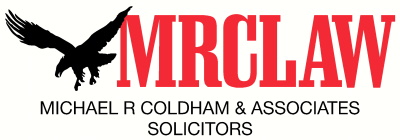Buying a home is an exciting milestone, but the legal jargon involved in contracts and the conveyancing process can be overwhelming, especially for first-time buyers.
This article explains some key terms that you’ll likely encounter through your property journey. Remember, the information is general only. Conveyancing regulations and processes vary across Australia, so getting professional advice from an experienced conveyancer or lawyer is essential. This way, you can make informed decisions about your property purchase.
Conveyancing
This is the legal process of transferring the ownership (title) of a property from the seller to the buyer. A conveyancer or solicitor can handle the necessary legal paperwork and ensure the transaction is completed correctly. They will conduct searches, review contracts, and manage the settlement process.
Contract of Sale and Section 32 Review
It is recommended to have your contract reviewed to avoid issues that arise after signing, such as discovering expired building reports which allow for a negligence claim or rescission notices that might present as a minor error. The premise that buyer beware is no longer true. A vendor must proactively disclose all information relevant to the sale, and the conveyancer or lawyer can adequately check for potential issues.
Other items to check are:
- Local council records: These confirm whether the dwellings on a property comply with regulations and zoning laws and if there are any outstanding notices. Ask if there are any outstanding building orders. Councils also provide important details that can impact the future use of a property, such as zoning restrictions, flood and bushfire risks, environmental concerns, and heritage listings. See NSW Planning Portal for more info.
- Pest and building reports: Conducted by qualified building professionals, these assess the state and repair of the property’s dwellings and check for pest infestations. These reports can flag costly issues to help buyers make informed decisions before entering a binding contract.
- Government searches and enquiries: These help uncover potential issues affecting a property, such as future proposals for road widening or land acquisition for infrastructure.
- Strata inspection reports: For strata properties, these provide info on the financial status of the strata scheme, levies, maintenance, defects, insurance, and recent by-laws. Reviewing past meeting minutes can reveal potential issues or disputes.
Fixtures and Fittings
Understanding the distinction between fixtures and fittings is important so you know what items form part of the property purchase. Generally, fixtures are items permanently attached to the property, such as built-in wardrobes and appliances. Fittings are removable items like furniture. The contract should explicitly state what is and is not included in the sale.
Easements
An easement is a right that allows one party to use a portion of another party’s land for a specific purpose. Easements may be private (e.g., shared driveway) or public (e.g., maintenance of sewage or electricity services). They can be registered or unregistered, so reviewing the title, visiting the site, and asking questions is important.
Easements affect property value and development potential. For detailed info on easements, see Property Council Australia.
Cooling-Off Rights
Cooling-off periods give buyers time to conduct further due diligence, seek legal advice, secure finance, and resolve concerns after signing or exchanging contracts.
During this time, buyers can rescind the contract by giving written notice by the deadline. Exercising cooling-off usually requires paying a nominal penalty fee, often a percentage of the purchase price.
Remember, signing a contract creates a binding agreement.
Joint Tenants or Tenants in Common
If buying a property with someone else, your conveyancer or lawyer will ask whether you want to hold the legal interests as joint tenants or tenants in common.
Joint tenants hold equal shares as a whole; shares pass to surviving owners on death. Tenants in common hold specific shares, which can be transferred or left to beneficiaries. Choose ownership type carefully and discuss your goals with your conveyancer.
Settlement/Completion
This is the final stage where the purchase price balance is paid, and ownership officially transfers to the buyer. Authorities are notified, and the agent (if applicable) releases the keys.
Electronic Conveyancing (e-conveyancing)
Traditional settlements involved physical meetings to exchange documents and bank cheques. Electronic conveyancing streamlines this process via an electronic platform, removing time and location barriers.
Final Advice for Home Buyers
Conveyancing is a complex legal process with binding obligations.
Engaging a conveyancer or lawyer early can help you confidently navigate your property purchase. They identify risks, explain legal terms, and advise on your rights.
If you or someone you know wants more information or legal advice, please call 03 5747 8251 or email [email protected].

